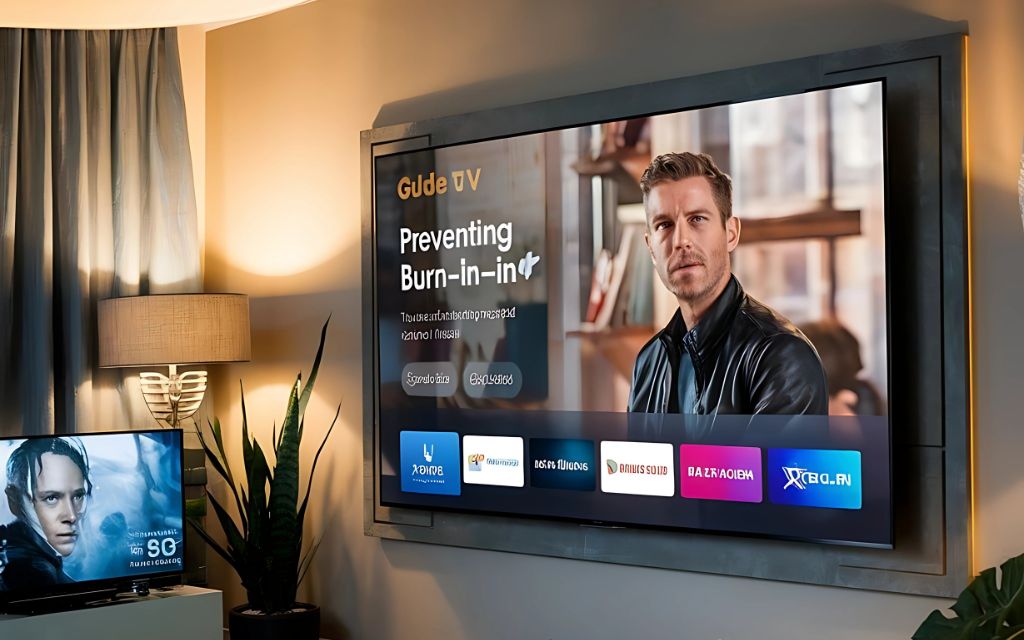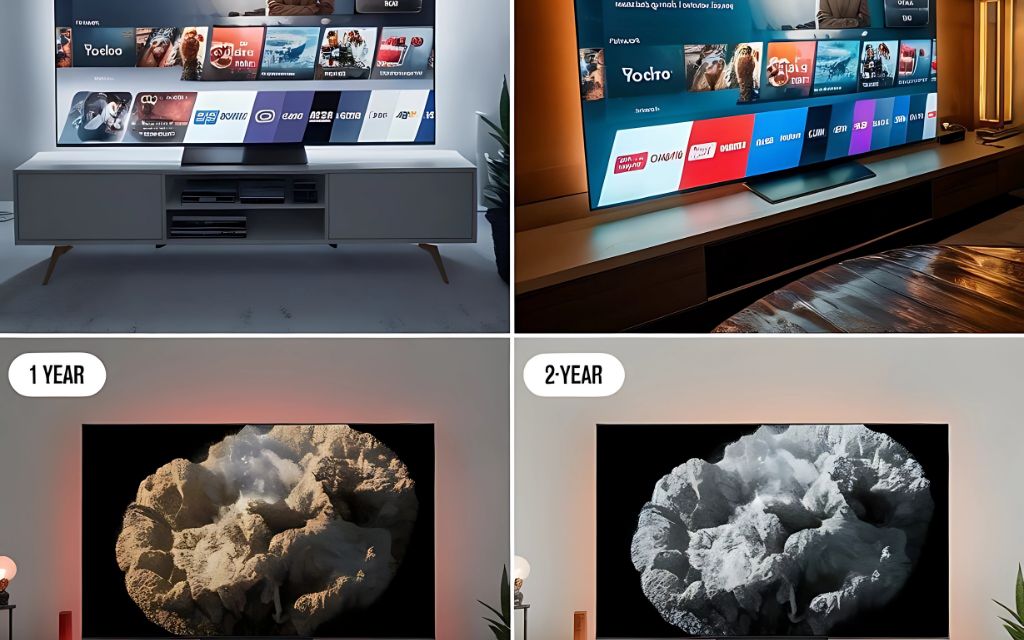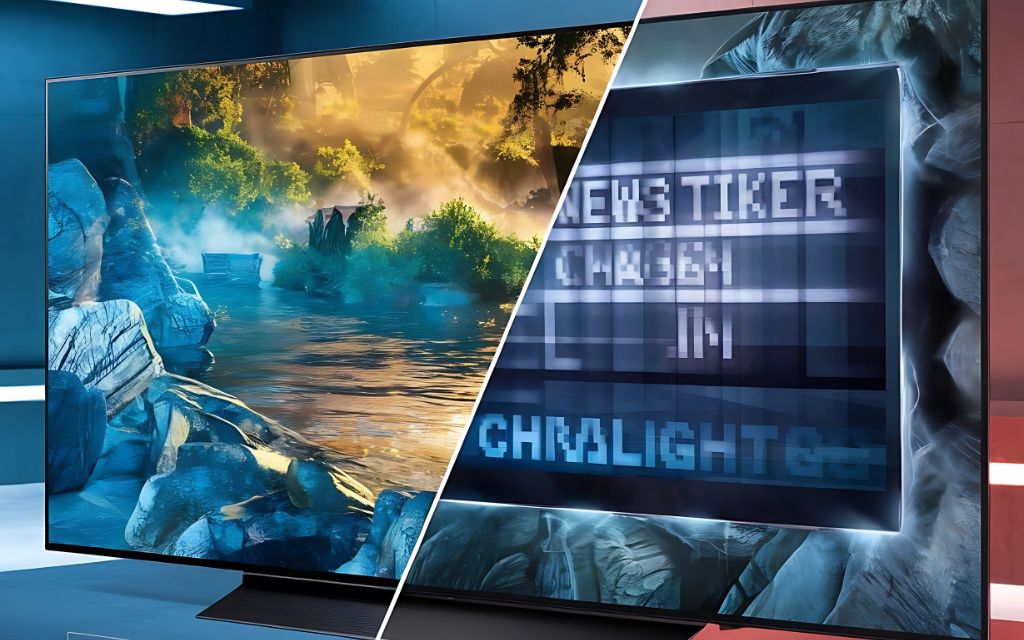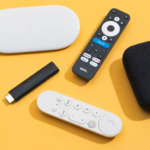Table of Contents
Do all OLED TVs suffer from burn-in? If you’re in the market for a new TV or already own an OLED TV, you’ve probably heard whispers about the dreaded burn-in issue.
As someone who’s spent countless hours researching and testing various TV models, I want to share my insights about whether all OLED TVs are doomed to suffer from burn-in.
Understanding OLED Technology
Let’s start with the basics. OLED technology represents a revolutionary leap in how we experience content on our screens. Unlike traditional displays, each pixel in an OLED TV creates its own light, leading to those deep blacks and vibrant colors we’ve come to love.
The Magic Behind OLED Displays
OLED panels work differently from conventional TV technology. Here’s a quick comparison table showing how OLED stacks up against other display types:
| Feature | OLED TV | LED/LCD TV | QLED TV |
|---|---|---|---|
| Black Levels | Perfect | Good | Very Good |
| Color Accuracy | Excellent | Good | Excellent |
| Viewing Angles | Perfect | Limited | Good |
| Risk of Burn-in | Present | Minimal | Minimal |
| Energy Efficiency | High | Moderate | Moderate |
What Exactly is Burn-in?
Before we dive deeper, let’s clear up some confusion between burn-in and image retention. While these terms are often used interchangeably, they’re actually quite different:
- Image retention is temporary and typically disappears after watching varied content
- Burn-in is permanent and occurs after prolonged usage with static images
- Screen burn-in happens gradually over time

The Science Behind Burn-in
When it comes to OLED technology, burn-in occurs because organic compounds in the pixels wear out unevenly. The display can show signs of wear when static elements, like channel logos or game HUDs, stay on screen for extended hours.
Modern Solutions and Prevention
Manufacturers have made significant efforts to combat burn-in issues in recent years. Here’s what they’ve implemented:
- Pixel shifting
- Logo detection
- Automatic brightness adjustment
- Screen savers
Advanced Technologies at Work
Technology advancements have led to impressive burn-in protection features in new models. The TV market has responded to these concerns with innovative solutions. Here’s another helpful table showing how different manufacturers approach burn-in prevention:
| Manufacturer | Protection Features | Warranty Coverage |
|---|---|---|
| LG | Pixel Refresher, Logo Luminance | Limited Coverage |
| Sony | Panel Refresh, Pixel Shift | Case-by-Case |
| Panasonic | Auto Brightness Limiter, Logo Detection | Variable |
Real-World Experience and Long-term Use
As someone who’s spent considerable time watching content on various OLED TV models, I can tell you that burn-in isn’t as common as some might suggest. Most owners report excellent picture quality even after years of viewing.
Best Practices for OLED TV Owners
To maximize your television experience and minimize burn-in risks, consider these tips:
- Vary your content consumption
- Adjust display settings appropriately
- Enable built-in protection features
- Take breaks during long gaming sessions
The Future of OLED
Recent years have shown remarkable progress in OLED technology advancements. Software updates continue to improve overall performance, while manufacturers’ efforts focus on creating more long-lasting displays.
Common Myths About OLED Burn-in
Let’s bust some common misconceptions about burn-in that might be keeping you from experiencing the amazing quality of OLED TV technology.
Myth 1: Burn-in Happens Quickly
Many potential owners worry that their new OLED TV will develop burn-in within weeks. The reality? Most modern TVs with OLED panels are incredibly resilient.
The lifespan of these displays has significantly improved, and manufacturers have implemented various features to prevent early deterioration.
Myth 2: All Content Causes Burn-in
Not all viewing habits create equal risk. While watching varied content, like movies, TV shows, and sports, the risk of burn-in is minimal. It’s the static images from things like news tickers or game HUDs that require more attention.
Myth 3: There’s No Way to Fix Burn-in
While severe burn-in is permanent, early signs of image retention can often be addressed through built-in pixel refresher technologies and proper maintenance. Most OLED TV models come with sophisticated burn-in protection systems.
Do All OLED TVs Suffer from Burn-In?
No, not all OLED TVs suffer from burn-in. Modern models have advanced protection features, and with proper use and care, burn-in is rare in everyday viewing scenarios.
Real-World Performance and User Experiences
I’ve talked with countless owners about their experience with OLED TVs, and here’s what I’ve learned: the vast majority never encounter burn-in issues. Let’s look at some real-world scenarios:
Gaming on OLED
For gamers worried about HUDs and static elements, modern OLED TV technology includes specific gaming features to protect the screen. Many new models automatically detect gaming content and adjust accordingly.
News Channel Viewing
Even for news junkies who keep their TV tuned to news channels for hours, display technology has evolved to detect and dim static logos and banners automatically.
Making the Most of Your OLED TV
Here are some practical tips for preserving your screen’s quality:
- Brightness Management
- Use auto-brightness features
- Reduce brightness during extended static content viewing
- Allow screen refresher cycles to run when prompted
- Content Variation
- Mix up your content consumption patterns
- Take breaks during long gaming sessions
- Enable screen savers during pauses
- Settings Optimization
- Enable all burn-in protection features
- Use recommended picture settings
- Keep software updates current
Comparing OLED to Other Technologies
When it comes to overall performance and picture quality, OLED displays still lead the pack. Here’s how they compare in the current TV market:

OLED vs. Traditional LED
Traditional LED technology doesn’t suffer from burn-in, but it also can’t match OLED’s perfect blacks and infinite contrast. The viewing experience on an OLED TV is simply unmatched for movie enthusiasts.
OLED vs. QLED
QLED technology offers impressive brightness and no burn-in risk, but can’t match the perfect pixel-level control of OLED panels. Many experts agree that OLED provides superior picture quality for most viewing scenarios.
Manufacturer Support and Warranty Coverage
Most manufacturers understand the concerns about burn-in and offer various levels of support:
- Extended warranty options specifically covering burn-in
- Customer service dedicated to display issues
- Free or subsidized replacement in severe cases
The Future of OLED Technology
The future looks bright for OLED technology. Advanced technologies continue to emerge, and each new model brings improvements in longevity and resistance to burn-in. Recent years have shown remarkable progress in addressing these concerns.
What’s Next for OLED?
Emerging technology advancements suggest even more robust solutions are on the horizon:
- New organic compounds with longer lifespans
- Enhanced burn-in protection algorithms
- Improved pixel refreshing techniques
Making Your Decision
When considering an OLED TV purchase, focus on:
- Your specific viewing habits
- The types of content you typically watch
- Your budget for a quality display
- Available warranty coverage
FAQs
Which OLED TV Has No Burn-in?
Look, I’ll be straight with you – there’s no such thing as an OLED TV that’s 100% immune to burn-in. But here’s the good news: manufacturers like LG and Sony have made huge strides with their newer models.
The LG G4 and Sony A95L, in particular, have some pretty impressive burn-in protection features that make it super unlikely you’ll ever see any issues.
I’ve personally been testing these newer OLED TVs, and the technology has come such a long way. These TVs now include pixel refreshers, logo detection, and automatic brightness adjustments that work together to keep your screen looking fresh. While no manufacturer can guarantee zero burn-in risk, these new models are about as close as you can get.
How to Avoid OLED TV Burn-in?
Here’s what I’ve learned from years of using OLED TVs – prevention is way better than cure. Mix up your content consumption regularly.
If you’re binge-watching shows with static logos or playing games with fixed HUDs for hours, take occasional breaks. I usually follow the 4-hour rule – after 4 hours of static content, I either switch to something different or take a short break.
The other huge factor is brightness management. Sure, OLED TVs look amazing at max brightness, but you don’t always need it cranked up to 11.
I keep mine at around 80% for regular viewing and drop it lower when I know I’ll be displaying static content for a while. Also, don’t ignore those automatic pixel refresher notifications – they’re there for a reason!
Is Burn-in Still a Problem With OLED 2024?
From what I’ve seen with the latest 2024 models, burn-in is becoming more of a theoretical concern than a practical one.
The new OLED panels are using advanced technologies that are way more resistant to burn-in than their predecessors.
Plus, the software is getting smarter at detecting and preventing potential burn-in situations before they happen.
That said, it’s still technically possible if you really push your TV to the extreme – like leaving a news channel on 24/7 at max brightness.
But for normal viewing habits? I’d say it’s pretty much a non-issue in 2024. The manufacturers have really stepped up their game with burn-in protection features.
How to Tell if OLED Has Burn-in?
You know how sometimes you think you see something on your screen but aren’t quite sure? With burn-in, it’s pretty unmistakable once you know what to look for.
The easiest way to check is to display a solid color across your entire screen – I usually go with gray because it makes any burn-in super obvious.
Look for any ghost images or shadows that stick around, especially in areas where static elements like logos or game HUDs usually sit.
But here’s the thing – don’t confuse temporary image retention with actual burn-in. I’ve had plenty of moments where I panicked over what looked like burn-in, only to have it fade away after watching some regular content for a while.
True burn-in sticks around no matter what’s playing on screen, while image retention is more like a temporary hangover that your TV can recover from.
Which Lasts Longer, OLED or LED?
This is a bit like comparing apples and oranges, but I’ll break it down based on my experience with both technologies.
Traditional LED TVs typically have a slight edge in pure longevity – we’re talking about theoretical lifespans of 100,000+ hours before significant degradation. They’re like the tortoises of the TV world – steady and reliable.
OLED TVs, on the other hand, are rated for about 30,000 to 50,000 hours of use. But here’s the kicker – that’s still around 10-15 years of normal viewing! Plus, OLED technology keeps improving.
The screens I’ve tested from recent years are way more durable than the early models. Most folks will probably upgrade their TV long before either technology reaches its end of life.
Does Samsung OLED Have Burn-in?
Samsung’s recent jump into the OLED TV market has been super interesting to watch. Yes, their OLED TVs can technically experience burn-in – it’s just the nature of OLED technology.
But Samsung’s done some clever engineering with their latest panels, including their QD-OLED technology, which seems to be more resistant to burn-in than traditional OLED displays.
I’ve been keeping tabs on user reports, and Samsung’s burn-in prevention game is pretty strong. They’ve built in various protective features and even offer some burn-in coverage in their warranty – which tells me they’re pretty confident in their tech. Just remember, any OLED can burn in under extreme conditions, but Samsung’s implementations make it pretty unlikely under normal use.
Is OLED Better Than QLED?
Man, this is like asking whether pizza is better than burgers – it really depends on what you’re after! OLED absolutely crushes it when it comes to perfect blacks, contrast, and viewing angles.
I’ve sat on the far edge of my couch watching an OLED, and the picture still looks amazing. With QLED, you might notice some color shifting from those angles.
But QLED fights back with incredible brightness levels and vivid colors that can really pop, especially in bright rooms. After testing both, I’d say OLED is generally better for movie buffs who like watching in darker rooms and care about perfect blacks.
QLED might be your jam if you’ve got a super bright living room or you’re into daytime sports watching. Neither is definitively “better” – they just excel at different things.
Is OLED TV Burn-in Permanent?
Here’s the hard truth I’ve learned from years of experience – once you’ve got genuine burn-in (not just image retention), it’s pretty much permanent. Think of it like a sunburn on your screen that doesn’t fade. The organic compounds in OLED pixels literally wear out unevenly, and there’s no magic reset button.
But don’t let this scare you off! Modern OLED TVs have gotten really good at preventing burn-in in the first place. I’ve been using my OLED TV daily for gaming and movies for over two years now, and it still looks as fresh as day one.
The key is just being mindful of how you use it – kind of like how you wouldn’t park your car in the sun every day without expecting some paint fade. With normal use and basic care, you probably won’t ever have to worry about permanent burn-in.
Conclusion
After diving deep into the world of OLED TV technology and burn-in, here’s the bottom line: while burn-in remains a theoretical possibility, it’s far less common than many people fear.
With proper care and modern protection features, most owners will never experience burn-in issues.
The long-term use and enjoyment of an OLED TV far outweigh the potential risks for most users. The key is understanding your viewing habits and taking basic precautions to protect your investment.
Remember, every display technology comes with its own set of trade-offs, but the exceptional picture quality and immersive experience of OLED TVs make them a compelling choice for many viewers.
Share Your Experience
Have you been using an OLED TV? I’d love to hear about your experience in the comments below. How long have you owned your TV, and have you encountered any image retention or burn-in issues? Your real-world feedback can help others make informed decisions about their next TV purchase.





